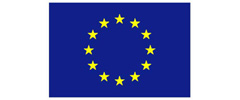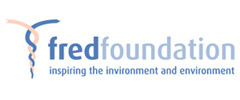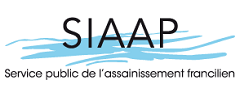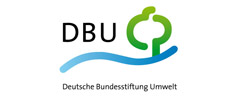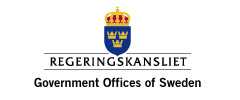Launch of the Life+ Project ChildProtect: Children's Health should be our Primary Concern
Debate with policy makers in Brussels looks at need to speed up EU action to protect children’s exposure to harmful ‘endocrine disrupting’ chemicals
27.02.2014 |WECF Report

From right to left: Martine Rohl of the Belgian Federal Ministry, Martin Seychell of DG Sanco, WECF Director Sascha Gabizon, Peter Korytar, DG Environment and Genon Jensen, Director HEAL
“Time to Act – Protecting Children from Hormone Disrupting Chemicals”
On February 19, the Policy Dialogue meeting “Time to Act – Protecting Children from EDCs” took place in Brussels, in a venue right next to the European Parliament, and near the Commission building.Report on the Policy Dialogue 19 February 2014, Brussels - available as PDF
The policy dialogue was organized by WECF, Women in Europe for a Common Future, and PAN-Europe, as part of the LIFE+ project “ChildProtect” co-funded by the European Commission DE Environment and the German Federal Ministry for the Environment, Nature Conservation, Building and Nuclear Safety.
The aim of the meeting was to gain more understanding and support from policy makers and stakeholders to speed-up EU action to protect children’s exposure to harmful ‘endocrine disrupting’ chemicals through the ongoing EU processes of setting EDC criteria and developing an EDC strategy. In total 60 participants were registered, of which 40 participated.
A better protection of children's health
Sascha Gabizon, WECFs international Director opened the policy dialogue session, explaining the aim of the meeting, and introducing speakers and participants, among which were representatives from the European Parliament, the European Commission, national govenments, business and industry, science and medical organisations, WHO, NGOs and media.
Gabizon presented the 2,5 year project “ChildProtect” co-funded by the European Commission LIFE+ program. She introduced the project partners WECF, PAN-Europe and the Gezinsbond – and the aim to improve governance of chemicals of concern such as EDCs for a better protection of children’s health. She explained how the project builds on the “Nesting” program implemented in Germany, France, Netherlands and 7 other EU countries, and is in line with the implementation of EU directives and the pan-European PARMA process on Environment and Health.
Unacceptable Levels
To give an impression of the scope of the problem, the participants watched the 5 minute trailer of the award winning film "Unacceptable Levels" by Ed Brown. It presents extracts of interviews with policy makers and scientists on the gap between risks identified of EDC’s and the lack of political action. The trailer can be seen here:
Key note presentation TEDX
Carol Kwiatkowski from TEDX, California, gave a video presentation on the combined scientific evidence on hormone disrupting chemicals of the last 20 years and the overwhelming indications that the precautionary principle should be applied to protect children, to reduce the increase of irreversible and long-term health damage and the social and economic costs of this damage. In the USA the costs of not regulating EDCs are already estimated to cost tax payers at 1 trillion USD each year, according to TEDX. In her presentation she divulges that the recent increase in endocrine-related diseases coincides with the introduction of modern synthetic chemicals. She explains that research findings have concluded that these diseases are in part caused by exposure to endocrine disruptors. “We eat, drink and touch endocrine disrupting chemicals every day”. Furthermore, Carol Kwiatkowski argues that current government testing does not adequately test for endocrine disruption. In order to save lives and money, “better treatments are not the answer; it’s time to focus on prevention”. Watch her presentation here:
EDCs key challenge for European environment and health policies
There is growing evidence that EDCs may result in permanent health damage to the hormone system of children. Pregnant women are exposed to these chemicals on a daily basis, transferring them to their child in the womb. EDCs can be found amongst others in sprayed fruits and vegetables, plastics, bottles, cutlery, toiletries and cosmetics, toys, clothing and cleaning products. The World Health Organisation (WHO) has highlighted the threat they pose to human health and the European Environment Agency to the risk to the environment. Endocrine disrupting chemicals (EDCs) have emerged as a key challenge for European environment and health policies, but the time-plan for action is being continuously delayed.

Children’s health should be our primary concern
Dr. Gavin Ten Tusscher, head of the neonatal department of the Dutch ‘Westfries’ hospital at the Westfries Gasthuis in Hoorn, - a hospital which has made all medical devices EDC free over the past couple of years, - opened the first session of the debate, explained the effect of endocrine disruptors and how children are exposed to them. Scientific studies point out the role of perinatal exposures to EDCs, which can trigger various diseases like cancer, ADHD or diabetes, even later in life. Exposure to toxic and hormone disrupting chemicals such as DEHP is the highest among the most vulnerable, babies born preterm who are fed through nasogastric tubes the first weeks of their lives, they can receive up to 1000 times the dose adults receive, with a risk of long-term, irreversible health effects such as testicular cancer, low semen quality and endometriosis”. Gavin Ten Tusscher explained why so many scientists are calling for urgent policy action to reduce children’s exposure to harmful chemicals suspected to disrupt the endocrine system (EDCs) in daily lives. The American Medical Association recommended that all hospitals choose medical devises which are DHEP-free, but few are doing so. “We are playing with fire”, concluded Dr. Gavin Ten Tusscher at the end of his speech was: "Let us learn from our mistakes and implement these lessons with other chemicals. First do no harm."

Thanks to civil society progress has been made
Corinne Lepage, French MEP for ALDE, prepared her presentation for the event on video and was very sorry that she could not be at the event in person, as she fully supports civil society's work on the cause.
"Thanks to civil society we have made a lot of progress, just think of the Westlund report on EDCs, but we could have made a lot more progress though. Just as in France, the European position towards EDCs is changing and we can see a draw back. Baroso asked for an impact assessment, while there is a real need to act now and protect public health. Unfortunately EFSA is afraid to do so and the enormous weight from the industry prevails over public health, with a disaster waiting to happen. If civil society does not put any pressure on policy makers and politicians the whole process will come to a stand still". Lepage ended her message with the hope that 'common sense will prevail in the end'.
Study shows long term effects of EDCs
Janna Koppe, Prof. em. of Neonatology at Amsterdam University presented studies showing the long term effects of EDCs even transgenerational. Being exposed to EDCs can show harmful effects even in the grandchild generation. Avoiding EDCs during pregnancy is urgently needed, but almost impossible as EDCs can be found in food, plastics, toiletries and cleaning products. Therefore strong regulation to prevent pregnant women from EDCs should be in place. In the meantime pregnant women should be informed about EDCs in products to give them a chance to buy healthier alternatives. She called for zero-tolerance for EDCs in products and environments of children and their parents.

"Father’s well-being before conception is also key to baby’s health"
Janna Koppe, emeritus Prof. Neonatology at Amsterdam University came with a surprising insight during her presentation. In addition to the mother, also the father’s health before conception is the key. As sperm is being renewed every 3 months, it is important for the future father to focus on limiting their exposure to EDC chemicals before conception. Prof. Koppe, with a note of humour, recommended fathers to take a health-holiday 3 months before conception. She called for zero-tolerance for EDCs in products and environments of children and their parents.
Lunch-time interactive dialogue session
A journalist from the news-service “Chemicals Watch” moderated an interactive dialogue over lunch with the participants in which participated also the representative of the European Commission DG Sanco. The European Union had planned to adopt a Strategy on EDCs and related criteria in 2013, but this has been delayed and no new time-line has been made known. Sascha Gabizon, Executive Director of WECF noted that each year of delay, another 5 million children are born in the EU with a risk of long-term irreversible health impacts, which seems irresponsible. We need to make the arguments to protect children from hormone disrupting chemicals much stronger, said Danish MEP Christel Schaldemose who participated in the debate, "We can no longer wait". Reference was made also to the WESTLUND report on EDCs in which MEPs have called on the Commission to speed up action on EDCs.
Hiltrud Breyer, German MEP for the Greens was worried about this approach by DG Sanco and shocked to find that, after a four year leave from the Parliament, nothing had really changed and the European commission had postponed decision making thus far, "the interim criteria for EDCs adopted are not even being implemented". She continued "It seems as if the European Commission is deregulating the existing EDC related legislation by delays or bad implementation". Representatives from the Chemical and Toys industry were asked their opinion, a representative from the toys industry, a young father himself, stated that ‘they are not the scientists’, but that the toy industry will comply with any new legislation concerning safety and health. The report on the session by Chemical Watch can be found here.
Surprising announcement on Toys Safety Directive
The policy dialogue meeting coincided with a EU decision taken on 18 of February 2014, to continue to allow nickel – a proven carcinogen - in children’s toys. According to Alexandra Caterbow, Senior Chemicals Expert at WECF, this “shows us that our policy makers are not making our children’s health the priority it should be”. Nickel is on the list of restricted metal elements under the new Toys Safety Directive (in force since July 2013), but has been exempted till date. Alexandra Caterbow, judges this decision irresponsible, since nickel is classified as a Carcinogen category 2 and is a known allergen. “The new derogation of use granted to nickel is undermining the protective legal regime of ban of the CMR compounds which the Toys Safety Directive has been choosing to ensure the best possible protection of children’s health. The more derogations given to industry, the less protected our children are. Not only heavy metals, but also Endocrine Disrupting Chemicals continue to be used in children’s toys, - especially for ‘non-essential’ products like toys - this situation has to urgently change". Dr. Gavin ten Tusscher stated, "we should not only take phthalates out of toys for children aged 3 or below, but we should take all EDCs out of children's toys". See also the opinion piece (OP-ED) by WECF in Chemical Watch on the problems with the Toys Safety Directive here.
Presentations by European Commission and Q&A session
Martin Seychell from the European Commission of DG Sanco was the first speaker in the afternoon session, and started by confirming that “Our citizens, our human resources, are our key assets in the European Union”. He furthermore confirmed that “Children are the most vulnerable and need higher protection”. He also confirmed that “we should not wait till we have absolute certainty”, however, defending the delays in the EDC criteria setting and strategy development, he explained that “we should work on the impact assessment, informed decisions are essential for good regulation of EDCs.” At the same time Mr. Seychell mentioned "proportionality" of measures, and the "illusion" of protection through legislation, which were taken up in the ensuing question and answer session by MEP Hildrud Breyer who was worried that this would mean that the Commission would not be willing to take the necessary legislative steps to better protect public health and children’s health in particular from risks of endocrine disrupting chemicals (EDCs). Mr. Seychell justified the long delay in the development of EDC criteria and strategy that civil society should have a chance to contribute to the impact assessment, which will be carried out this year. However, MEP Breyer asked why this impact assessment was not done earlier, as 3 years have gone by without any action taken, and given the fact that the criteria and strategy were supposed to be finalized by now.
Peter Korytar from DG Environment showed in his presentation all the EDC related processes and the European Commission's overall strategy on EDC action, which was first published in 1999, will be revised this year and it will be published in the second part of 2014. He outlined that since 1999 they have developed better test methods for the identification of EDCs, stricter and clearer regulations, a greater understanding of EDCs and a priority list for further research.
Martine Röhl of the Belgian Federal Ministry spoke in her presentation about the endocrine disruptors approach of the Department of Product Policy and Chemical Substances. She explained the SVHC (substances of very high concern) roadmap to 2020 implementation plan, which hopes to identify all relevant SVHCs by 2020. Furthermore, she outlined various REACH processes involved in this plan, including the testing of substances beyond standard tests in order to determine potential SVHC status.
HEAL (Health & Environment Alliance)
Protecting children's health from endocrine disrupting chemicals is a key concern for a great number of civil society and medical sector organisations, stated Genon Jensen, Director of HEAL. We are working together in the EDC-free Europe campaign to bridge the science-policy gap and assure application of the precautionary principle. The real risks of EDC’s for children have resulted in many individual European member states taking action, including Sweden, Belgium, France and Denmark, which have mandatory substitution of some EDCs suspected chemicals such as Bisphenol A and phthalates going beyond the current EU regulation. Lisette van Vliet (HEAL) called for the Commission to issue a comprehensive EU EDC strategy as soon as possible, stating that we could be incurring very high costs to society from delaying action on a wide range of suspected EDCs.
Conclusion: Parents are concerned
Conclusion Sascha Gabizon of WECF concluded that immediate steps which would be necessary to protect this generation of children from risks of endocrine disrupting chemicals (EDCs) should be targeted information campaigns especially for pregnant women and parents of young children. She also recommended as an intermediate step till legislation has been improved to have mandatory labeling of children and food products which contain EDCs. “After a Dutch TV report on EDCs our mailbox exploded. “Parents are concerned, they want information and alternatives, but they don’t get access to this information and continue to involuntarily expose their children to EDCs”. Key points of action are:
- Protection of children by applying the precautionary principle, through mandatory subsitution of known EDC chemicals in children's products, neo-natal care and day-care centers.
- End the delay of the EU EDC criteria and strategy - every year 5 Mio babies are born in the EU, every delay poses health risks at them
- Ask governments to inform pregnant women in the EU immediately about EDCs.and safer products and alternatives.
[1] Nickel is a carcenogen class 2 and alergen, which according to WECF has no place in children’s toys.[2] DEHP is part of a group of chemicals called ‘phthalates’ a plastic softener used in many plastics, including in medical devise tubes. Non DEHP medical tubes exist on the market, but few hospitals use them.
This project is supported by the Life+ project of the European Commission DG Environment
Publications presented at the conference
The following reports were presented at the conference for use by those interested:
EDC exhibition
An exhibition on EDCs both in the English and Dutch language can be obtained on loan from WECF


The healthy baby present box was exhibited or so-called “green baby box” was presented as an example of how social responsible retailers can contribute to reducing EDC risk for children. The Green baby box can be ordered from BabyBeGood

- The EDC Consumer Information Guide (French, German, Dutch, English) can be downloaded here
- The Children’s Textiles containing EDCs consumer guide and other chemicals (French, German, Dutch, English) can be obtained here
- Press release: "Time to act: protecting children from hormone disrupting chemicals"
- Gezinsbond: Childnorm and EDCs (in Dutch) – download here
- WECF: Protecting Children from EDCs (in Dutch) – download here
Related News
Meet the Winners of the Gender Just Climate Solutions Award at COP24
On the 70th anniversary of the Universal Declaration of Human Rights, we awarded Gender Just Climate Solutions Winners at the climate negotiations in Katowice, Poland
11.12.2018
Invitation: Gender Just Climate Solutions Award 2018
10 December, COP24 Katowice
04.12.2018
Getting to the Future We Want
4-7 November, Brussels: European Environmental Bureau’s (EEB) Annual Conference
12.11.2018
GoodFood4All
WECF and partners all over Europe start GoodFood4All Campaign
06.11.2018
#Ruralwomen: join our Women2030 campaign!
15.10.2018



















